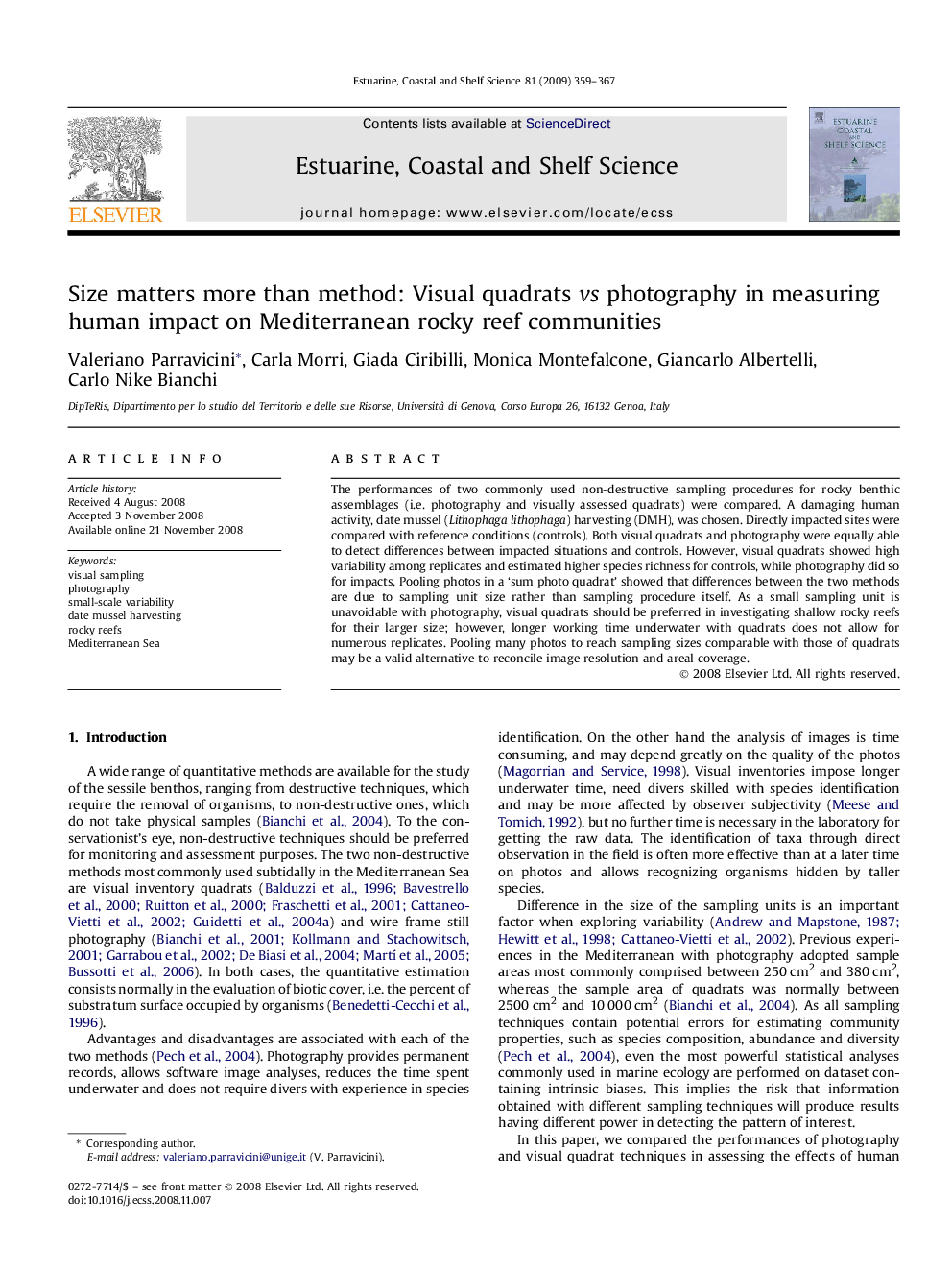| Article ID | Journal | Published Year | Pages | File Type |
|---|---|---|---|---|
| 4541410 | Estuarine, Coastal and Shelf Science | 2009 | 9 Pages |
Abstract
The performances of two commonly used non-destructive sampling procedures for rocky benthic assemblages (i.e. photography and visually assessed quadrats) were compared. A damaging human activity, date mussel (Lithophaga lithophaga) harvesting (DMH), was chosen. Directly impacted sites were compared with reference conditions (controls). Both visual quadrats and photography were equally able to detect differences between impacted situations and controls. However, visual quadrats showed high variability among replicates and estimated higher species richness for controls, while photography did so for impacts. Pooling photos in a 'sum photo quadrat' showed that differences between the two methods are due to sampling unit size rather than sampling procedure itself. As a small sampling unit is unavoidable with photography, visual quadrats should be preferred in investigating shallow rocky reefs for their larger size; however, longer working time underwater with quadrats does not allow for numerous replicates. Pooling many photos to reach sampling sizes comparable with those of quadrats may be a valid alternative to reconcile image resolution and areal coverage.
Related Topics
Physical Sciences and Engineering
Earth and Planetary Sciences
Geology
Authors
Valeriano Parravicini, Carla Morri, Giada Ciribilli, Monica Montefalcone, Giancarlo Albertelli, Carlo Nike Bianchi,
